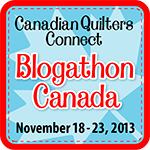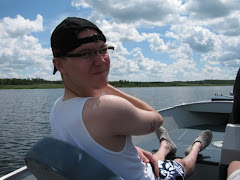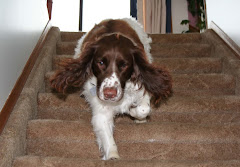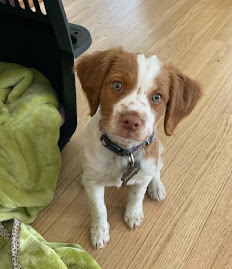Michelle is looking to buy a serger. Below is part of her email to me:
Can you recommend any GOOD serger project books, or serging books that you think are invaluable?
Maybe you could do a blog post on your serger, what you make with it, and how much you love it. *hint hint* I just didn’t find many blog posts from ‘Sergers’ (people) when I looked.
Even though I own several sewing and quilting books, I only have one serger book.
Singer's Sewing with an Overlock meets all my serging needs. The pictures are excellent. The book provides detailed instructions on setting the tension, three-thread rolled hem, gathering and decorative threads.
My serger is a White Superlock 2000, that I purchased new in March 1997 for $700 CAD.
It uses up to four spools of thread, has a differential feed, a scrap catcher tray and a built in thread cutter.
Sergers are even more finicky to thread then sewing machines. Not only must they be threaded correctly, they have to be threaded in this exact order:
- upper looper (blue)
- lower looper (purple)
- right needle (yellow)
- left needle (green)
On my serger the thread paths are colour coded and I marked the threading order with a black permanent marker.
One of the things I love about this serger is that the entire bottom opens up, for easy threading and cleaning.
I usually tie on the new thread colour for threading the upper and lower loopers. Then I manually thread the duel needles.
For this post, I manually threaded the loopers as well as the needles using the same four colours of thread that the guide shows. This serger is easy to thread.
Here I removed the presser foot. Needle nose pliers or long thin tweezers are excellent tools for threading sergers.
Before serging anything, always start a thread chain to ensure the machine is threaded correctly and in the correct order.
Then serge a scrap of fabric to check the tensions.
Whenever, I'm setting the tension on my serger I use contrasting thread colours to quickly identify which loopers or needles require adjusting. The purple side (lower looper) is the bottom and blue (upper looper) is the top. The first strips I serged are on the right and the last one is purple on the left. On the back side the left needle tension was too loose and not even. I tightened it in six very tiny increments.
The tension disks on this serger are very similar to the upper tension dial on mechanical sewing machines. It is important to thread the machine with the presser foot up and make sure the thread is set in between the tension disks.
I'm sewing a denim dog bed for my grand-dog Penny.
Serging is fun and I love the professional finish.
See the little white button on the harp, just right of the presser foot...that is the built-in thread cutter, pressing it down raises the little blade behind the presser foot.
This is such a cool feature. I didn't realize what a wonderful thing it was until I used a serger without one.
Serging is quite messy, there is lots of dust and lint from the fabric being cut just before it is serged. Usually my serger is all dusty, obviously it was vacuumed before the photo shoot.
The dark blue striped denim wasn't wide enough. The light blue piece is old jeans.
Dog bed completed. I sure hope Penny likes it.
I use my serger when sewing garments, dinner napkins, tablecloths, tea towels, flannel pj bottoms, nylon bags, cotton bags, Christmas stockings, Halloween costumes, curtains, place mats, hair towels, oven mitts and baby quilts. It serges wonderful rolled hems on fine fabrics like sheer curtains. I finish the seams on garments with it. When I make baby quilts, first I sew the pieces together, then overlock them and finally top stitch the seams in place using a zig zag stitch on a sewing machine. I do this because baby quilts get washed frequently. For tea towels I serge the edges, then fold over once and hem.
My White Superlock was made in China and is available as a Husqvarna or a Singer serger. The Singer does not have a scrap catcher, but comes with three extra feet.
My only regret with my serger is that I didn't buy it sooner. Happy serging and sewing.
December 28, 2020 Update
In 2015, I gave this serger to my grown daughter in Ontario and replaced it with a Pfaff Coverstitch 3.0. In August 2020, I traded the Pfaff Coverstitch in to buy the identical machine, only this time it is branded a Husqvarna HClass 250S.
I bought the same machine because it is the easy to thread, clean and a joy to serge with. Happy stitching all.













































































































